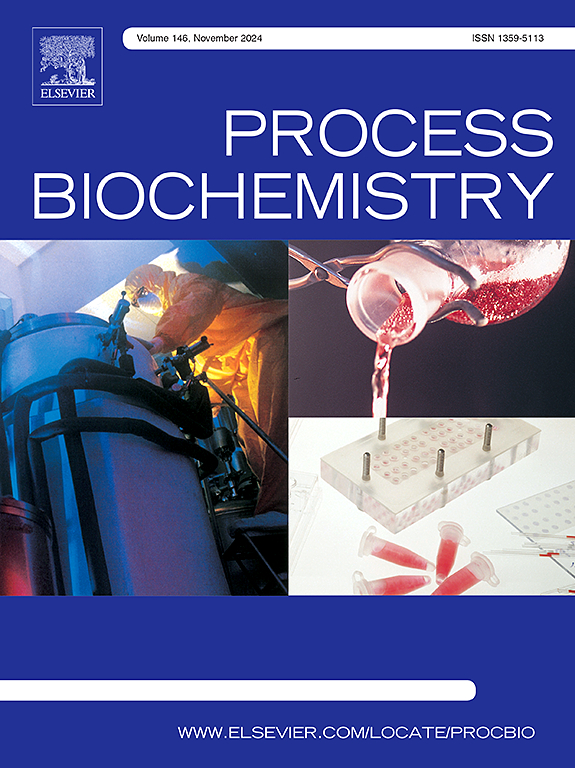Improving 3′-sialyllactose biosynthesis in Escherichia coli by engineering Neisseria meningitidis 406Y α2,3-sialyltransferase
IF 3.7
3区 生物学
Q2 BIOCHEMISTRY & MOLECULAR BIOLOGY
引用次数: 0
Abstract
3′-Sialyllactose (3′-SL, Neu5Acα2,3 Galβ1,4Glc), a prominent sialylated human milk oligosaccharide (HMO), has attracted significant attention due to its diverse physiological properties. The efficient α2,3-sialyltransferase (α2,3-SiaT) is crucial for the biosynthesis of 3′-SL. In this study, the 3′-SL biosynthetic pathway was constructed in EZAK (E. coli BL21(DE3) ΔlacZΔnanAΔnanK). 406NST, which exhibits a high 3′-SL yield and low by-product formation, was chosen for molecular modification. Five amino acid differences between 406NST and NST were targeted for site-directed mutagenesis. Subsequently, saturation mutagenesis was carried out at the D40 position, followed by superimposed multipoint mutagenesis to generate the optimal strain Z28 (406NST-D40R-N113D-P120H), resulting in an extracellular 3′-SL yield of 4.67 g/L in shake flasks. In a 5 L bioreactor, the extracellular 3′-SL yield reached 29.54 g/L, achieving an overall 3′-SL yield of 0.52 g/L/h and a lactose conversion yield of 0.62 mol 3′-SL/mol. In conclusion, a highly active and specific α2,3-SiaT was successfully constructed, significantly improving the yield of 3′-SL.
求助全文
约1分钟内获得全文
求助全文
来源期刊

Process Biochemistry
生物-工程:化工
CiteScore
8.30
自引率
4.50%
发文量
374
审稿时长
53 days
期刊介绍:
Process Biochemistry is an application-orientated research journal devoted to reporting advances with originality and novelty, in the science and technology of the processes involving bioactive molecules and living organisms. These processes concern the production of useful metabolites or materials, or the removal of toxic compounds using tools and methods of current biology and engineering. Its main areas of interest include novel bioprocesses and enabling technologies (such as nanobiotechnology, tissue engineering, directed evolution, metabolic engineering, systems biology, and synthetic biology) applicable in food (nutraceutical), healthcare (medical, pharmaceutical, cosmetic), energy (biofuels), environmental, and biorefinery industries and their underlying biological and engineering principles.
 求助内容:
求助内容: 应助结果提醒方式:
应助结果提醒方式:


